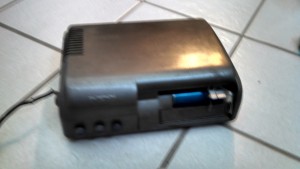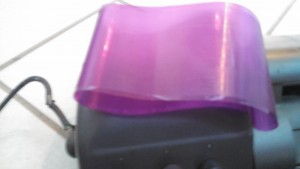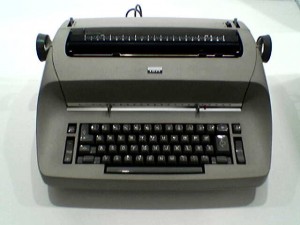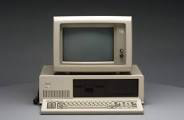Work-at-home jobs are all the rage right now, but if you’re a nurse or other healthcare worker, you probably think WAH isn’t an option for you. Guess again, because there are more and more healthcare and nursing jobs being introduced for those who want to or need to work at home.
The Top Non-Nursing WAH Jobs
Probably the easiest WAH medical job to break into is medical transcription. Many people already do WAH transcription from audio recordings without any formal training, so breaking into medical transcription is a matter of either having a background in healthcare that makes you familiar with the terminology or taking courses to tackle that complex lingo from doctors. Allied Health Schools recommends you need to complete a six-month to a two-year training course in addition to having a high school diploma, but if you have transcription experience, healthcare experience, or a combination of both, you may find entry-level jobs that will work with you before completing a training course and certification.
However, if you want to get into WAH medical billing and coding, you will need a certification in almost any job you apply for, including entry-level positions. There are different levels of certification and in the first level, you can apply to take the test without formal training if you have experience doing medical coding. That will be rare unless you are a semi-retired or retired nurse looking to switch careers and have extensive coding experience working as a case manager or an MDS nurse in long-term care. But yes, you’ll still need to take that test and get certified.

Bear in mind that some medical coding programs can take as long as getting a basic nursing certification to become an LPN if you have an interest in becoming a nurse. However, you’ll be hard-pressed to find LPN jobs you can do from home. Almost all work-at-home nursing jobs go to a higher level of nursing, Registered Nurses, or RNs.
Can You Really Work At Home As A Nurse?
When most people think of nursing, they think of hands-on care and wonder what a nurse can do from a home office. Some people consider working as a home health case manager as a WAH position, but that’s not really the case as home health case managers have to go into the office daily as well as attend meetings and care conferences in addition to their actual patient visits. Fortis notes that one exception to that rule would be the after-hours triage nurse, who goes on-call when the office closes and the case managers go home for the day.
An after-hours nurse works from their home, taking calls from the telephone triage nurse when calls from patients come in needing assistance. If the telephone triage nurse can’t handle the problem over the phone, he or she will call the nurses working after-hours to have them make a visit and address the issue. Nurses who work exclusively doing after-hours work do not have a patient caseload, so they are not required to attend patient care conferences or make regularly scheduled visits. They simply work their shifts from home, waiting for the next call.
It’s an unpredictable job position as some nights the on-call or after-hours nurse will be busy all night, or other nights there may only be one or two calls all night. You just never know.
WAH Nursing By Telephone
You may have noticed that the after-hours nurse receives their assignments from the telephone triage nurse. With a few exceptions where home health or hospice companies require their triage nurses to be on site to take calls, the telephone triage nurse is generally a true WAH position. Like the on-call nurse that makes visits, this can be very unpredictable, so you may be receiving calls one after another all night from 5 p.m. to when the office opens the next morning, or you may only have a couple of calls. Many home health and hospice companies also go by a schedule of seven days on and seven days off for their after-hours staff, particularly the telephone triage nurse who never goes out to make visits.
Companies like IntellaTriage handle triage calls for multiple hospices all over the country, so you can expect to stay fairly busy even at night, but also you will have to learn multiple systems for the different hospice agencies. That includes their electronic charting and their protocols. Don’t be surprised if each individual hospice you’re covering has a different script for simply answering the phone. If you’re very organized and set your WAH office up the right way, this isn’t nearly as bad as it sounds. Tip: keep your phone in a space big enough that you can have printouts of each script right by the phone, surrounding it. (IntellaTriage’s phone system shows which hospice is calling on the caller-ID before you pick up so you know which script to use.)

You’ll have to carry a lot of nursing licenses and you will probably need to reside in one of the nursing compact states to cover a wide territory, plus get licenses in states such as Florida, California, and more depending on where each agency being serviced is located. Also, note this agency does not have a triaging script. You will be relying on your own knowledge and individual company protocols for advising clients, unlike most insurance nurse hotline jobs.
WAH Nurse Hotline Jobs
If you want an alternative to doing telephone triage for a home health or hospice agency, you can also work from home for an insurance company nurse hotline. These lines operate 24/7/365 so a daytime schedule is possible. However, expect to spend some time paying your dues working evenings and nights for a while until daytime positions open up as they are in demand.
Carenet, based in San Antonio, manages multiple insurance company nurse hotlines, and you must do your training on site in San Antonio over the course of two weeks. Once your training is complete, if you aren’t local to San Antonio, you proceed directly to working from home. If you are local and able to go into the call center, you start out working on-site and become eligible to move to WAH based on performance.
You also have to show that you have a work space that meets HIPAA privacy guidelines for handling healthcare information. That means having a separate lockable room for your computer and any documents related to work, even if you live alone. You must have high-speed, secure internet access. Also, be forewarned that there are expectations for the amount of time you take to finish calls and the average number of calls you take per hour. If you are not on a call for more than two minutes, don’t be surprised if you get a text message from the shift supervisor wondering why you aren’t taking the next call.
Nurses use a computer program that presents a series of questions starting with the most critical scenario down to the least severe. You will be expected to ask the questions in exact order and not deviate from that recommendation script. All the questions are yes/no questions, and when the caller answers “yes,” it tells you what recommendations to give. You must follow this protocol to the letter.
The work-at-home trend now includes healthcare, so even if you thought working from your home office was nothing more than a dream, there are options for nurses and other medical staff to make a big change that can balance your personal and professional lives.
Source: http://www.inquisitr.com










